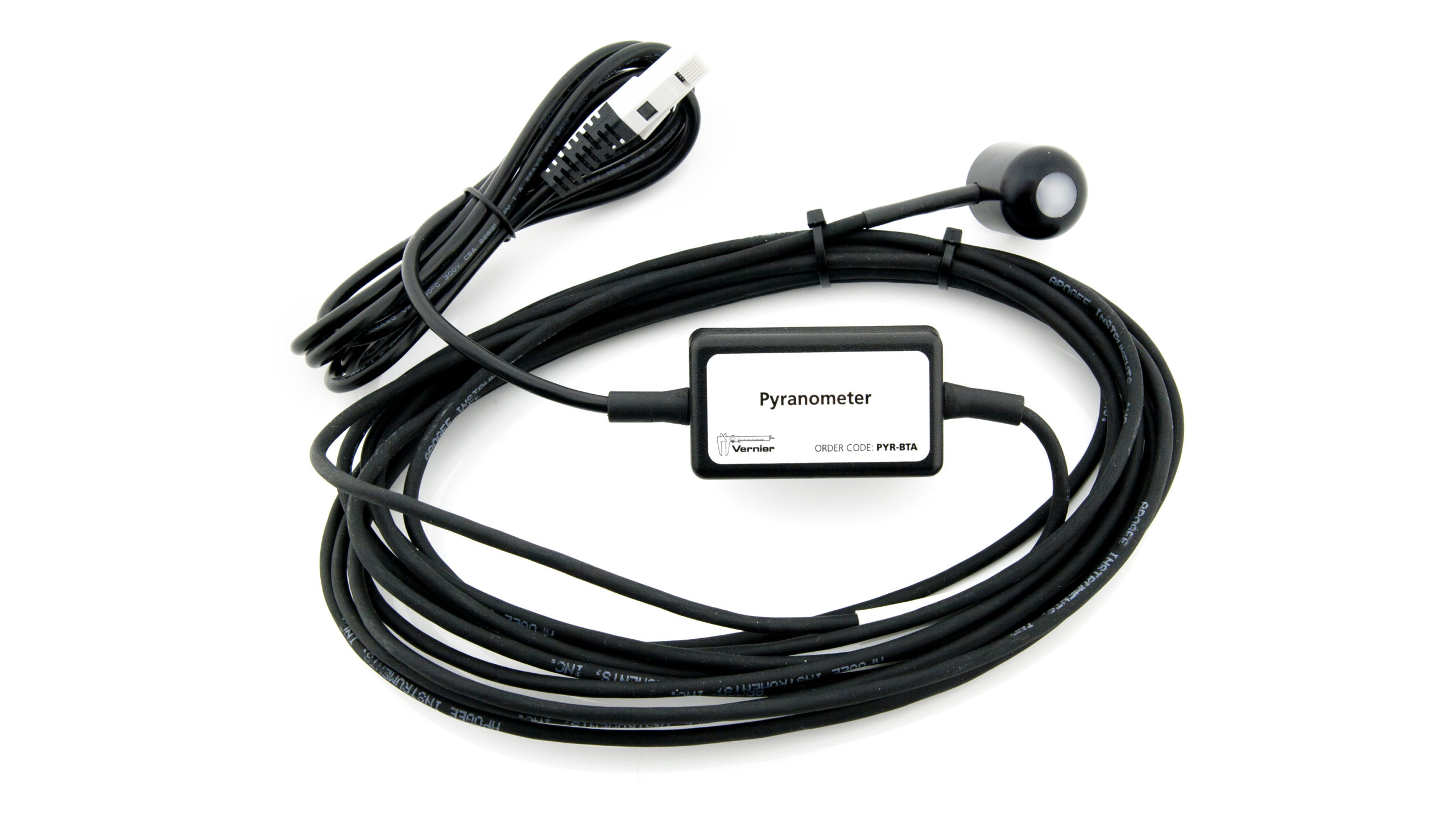Pyranometer (PYR-BTA )

Troubleshooting
- Primary Test: Make sure that the sensor detects sunlight. A bright sunny day should approach a thousand Watts/square meter in irradiance.
- Secondary Test: If there is no sun, you can use an incandescent lamp, which should produce a couple hundred Watts/square meter at a few centimeters range. If the Pyranometer is used with artificial lighting, be aware that there may be flicker in the lamp brightness, which can cause confusing signals.
Additional Troubleshooting
Specifications
- Sensing Unit: Apogee,SP-110, 5-volt pyranometer
- Irradiance Range: 0 to 1100 watts/m² (in full sun)
- Absolute Accuracy: ±5%
- Repeatability: ±1%
- Long-Term Drift: Less than 3% per year
- Cosine Response:
⚬ 45° zenith angle: ±1%
⚬ 75° zenith angle: ±5% - Wavelength range: 360 nm to 1120 nm
- Current draw: 300 µA
- Output signal: 0 to 4.4 V (dark to full sunlight)
- Typical Resolution: 0.3 Watts/m²
- Sensor dimensions:
⚬ Diameter: 2.4 cm
⚬ Height: 3.3 cm - Materials: Anodized aluminum with cast acrylic lens
- Operating Environment:
⚬ –40 to 70 ºC
⚬ 0 to 100% relative humidity
⚬ Designed for continuous outdoor use
⚬ Sensor can be submerged in water. The black electronics box should be kept dry. - Default calibration coefficients: Slope 250 W/m²/V; Intercept 0 W/m²
Calibration
Calibrate? No. The sensor is set to the stored calibration before shipping. If you are suspicious about the calibration, there are two ways to check.
- Compare the readings value with another Pyranometer.
- Use the Clear Sky Calibration method. You will need a sunny day with no clouds or pollution effects.
- Access the Clear Sky website where you can enter data into the web application to have the expected irradiance calculated.
- Input values for the calculation including latitude, longitude, altitude, time of day, day of year, air temperature, and relative humidity.
- You can compare the calculated irradiance with the reading on the Pyranometer.
- This procedure should be done at several different times. If the readings are consistently off, contact Vernier.
Note: Debris build-up on the lens of the Pyranometer Sensor is a common cause of inaccurate readings. Salt deposits can accumulate on the sensor from evaporation of sprinkler irrigation water and dust can accumulate during periods of low rainfall.
Related Products
- PAR Sensor (
PAR-BTA ) - Go Direct® PAR (Photosynthetically Active Radiation) (
GDX-PAR ) - Go Direct® Pyranometer (
GDX-PYR )
Additional Products
This sensor is great for use with current and voltage probes in solar energy studies with solar cells.
SMALL SOLAR CELLS
- KidWind 2V/400mA Solar Panel (
KW-SP2V ) - Vernier Energy Sensor (
VES-BTA ) - Go Direct® Energy Sensor (
GDX-NRG ) - Vernier Variable Load (
VES-VL ) - Current Probe (
DCP-BTA ) - Go Direct® Current Probe (
GDX-CUR ) - Differential Voltage Probe (
DVP-BTA ) - Go Direct® Voltage Probe (
GDX-VOLT )
LARGER SOLAR PANELS
- High Current Sensor (
HCS-BTA ) - 30-Volt Voltage Probe (
30V-BTA ) - Vernier Energy Sensor (
VES-BTA ) - Go Direct® Energy Sensor (
GDX-NRG )
